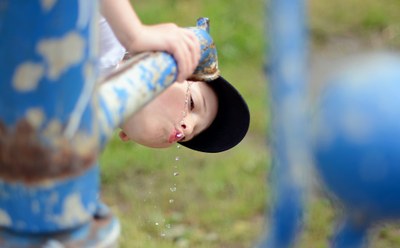All official European Union website addresses are in the europa.eu domain.
See all EU institutions and bodiesPeople are increasingly aware of the impacts our consumption has on nature and climate. One of the key consumption categories is clothing and other textiles. We spoke to Lars Mortensen, EEA expert on circular economy, consumption and production, who has worked on several assessment on textiles and their impacts on the environment.
What are the main impacts of textiles?
Textile production and consumption in the European Union have significant impacts on the environment and climate. Contributing to the EU Circular Economy Action Plan, the EEA estimated in its briefing about textiles and the environment that from a global lifecycle perspective, and for selected and measurable pressures, the consumption of textiles in Europe cause on average the fourth largest pressure on environment and climate change, after housing, food and mobility.
Concretely, we have shown that textiles consumption causes the third largest land use and water use in the value chain, the fifth largest material resource use and the fifth largest source of greenhouse gas emissions. Also, textiles cause pressures and impacts from their chemicals and we will study this year the amounts and impacts from PFAs in textiles.
Our results on textiles have formed a knowledge base for the EU Strategy for sustainable and circular textiles that came out in March 2022 and are currently used by the European Parliament in preparing their opinion on the EU textiles strategy.
What currently happens to clothes discarded in the EU?
Most used textiles in the EU are currently discarded as part of municipal waste and then incinerated for energy, but we don’t know the exact volume of this waste stream. On average 38% of textiles are donated for reuse and recycling but only about 10% of the donated clothes are sold in the same EU country and additional 10% in other EU countries. Most of the rest of the donated textiles are then exported to Africa and Asia.
Our latest briefing on textiles 'EU exports of used textiles in Europe’s circular economy' showed that EU exports of used textiles have tripled in two decades to almost 1.7 million tons per year in 2019.
About 46% of the total amount was exported to countries in Africa (mostly to Tunisia, Ghana and Cameroon), where a bit over half was reused, the rest was landfilled or dumped. About 41% was exported to Asia (mostly to Pakistan, UAE and India), where some of the textiles are mechanically recycled and some re-exported to other countries in Asia and Africa.
In general, there is huge uncertainty on these exports and what happens to our used textiles in Africa and especially in Asia. We are seeing a lot of both media and policy interest on this at the moment. All EU Member States have an obligation to collect textiles separately by 2025, after which we expect amounts of reused textiles collected will increase.
What can policy makers, business and consumers do to reduce impacts and exports of used textiles?
Policy makers are already working on how best to reduce impacts from exported used textiles. EU countries are now putting in place extended producer responsibility schemes and this will hopefully help, along with the including of textiles in the revised Eco-design Directive, which aims at making textiles safe and more sustainable by design.
Better sorting and coding to distinguish between textiles for reuse and textiles waste could also help. Businesses can also work to increase quality, durability and repairability of their textiles so they can last longer, among other things. Consumers can buy textiles of higher quality if they can afford to do so, wear them longer and buy reused textiles for example.
What role can bio-based fibres play in making textiles more sustainable?
Bio-based fibres that are used in clothing and other textile products are often regarded as more sustainable alternatives, but a technical report by the EEA’s European Topic Centre of Circular Economy and Resource Use demonstrates that this picture requires some caution.
While bio-based fibres offer potential to steer away from synthetic textiles made from plastics (which are mainly derived from oil and gas), they cause other environmental pressures, including water and land use related to agricultural activities, deforestation and fibre processing.
What is the EU doing to tackle negative impacts from textiles?
Building on the knowledge provided by the EEA and others, the European Commission proposed an ambitious strategy on sustainable products in March 2022. The strategy contains a rather large number of concrete policy initiatives regulating the textiles industry.
One important element of that is the inclusion of textiles in the revised EU Eco-design Directive, hopefully enabling safe and more sustainable design. Another is the including of textiles in the EU product passport. Also, the introduction of extended producer responsibly schemes across EU Member States is important. All in all, according to Euratex, there are over 16 pieces of legislation which will affect and regulate textiles on the EU market in the coming years.
Are there promising initiatives to move away from fast fashion across Europe?
The EU Textiles Strategy has a vision that “fast fashion is out of fashion” by 2030. I would say that currently fashion put on the market is dominated by fast fashion. The part of fashion which is not fast fashion, but of high quality, repairable and more timeless in design, has still a very small share of the market.
There are promising initiatives, but they have difficulty upscaling and competing with fast fashion. It is my hope and trust that the implementation of the EU Textiles Strategy, and maybe also some global policy focus on textiles, will help the industry move away from fast fashion towards a circular and sustainable system of textile consumption and production.
Our latest articles










